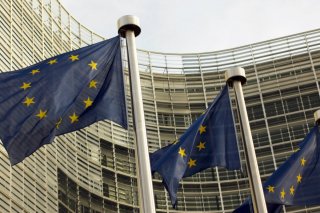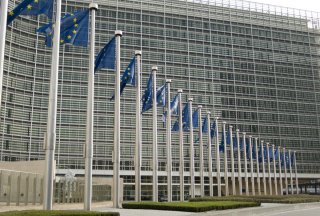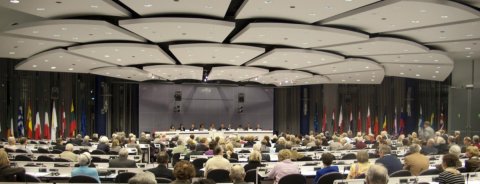My professional career at the EU-Commission in Brussels can be divided in three distinct periods:
- traineeship as student (1961 and 1962)
- Directorate General for Transport (1964-1984 and 1991-1999)
- Directorate General for Development (1985-1990)
In 1961 an ’62, while studying in Rotterdam, I spent my summer holidays as a student worker (traineeship) in DG Transport, each year for a period of 2,5 months. I was a trainee in the division for transport infrastructure cost charging. One day I became very impressed when in an office of DG Competition, which was located in the same building, representatives of big companies like Coca Cola and others arrived with huge files to register their companies under Regulation n° 17/61. It was during this time that I was first infected with the “European virus”. Notwithstanding the recent almost permanent criticism of “Brussels” in my native country as well as in other countries, this virus has never left me: on the contrary! Throughout the years and even after having left the Commission for my retirement in 1999, I considered myself more than ever a convinced European.
DG Transport
In September 1964 I started working for the Commission, in DG Transport, on a contract of “auxiliaire”. As a very young official I worked in different divisions: economic studies and statistics, transport pricing, competition rules, state aids, port policy and interrelations between transport and other policies. For eight years, before moving to DG Development in 1985, I was responsible for the relations in the field of transport between the Commission and the Council of Ministers, the European Parliament and the Economic and Social Committee.
Working in DG Transport at that time was not very rewarding. Decisions by ministers in the Council had to be taken by unanimity. In almost all cases there was one or the other Member State using its right to veto. The result was that the first 25-30 years of the Community hardly any progress was made in the Common Transport Policy. This was quite frustrating.
During the summer of 1976 I made a weeklong mission as an undercover truck driver from the Netherlands to Italy and vice versa. This mission was a real eye-opener for me. It provided me with a lot of information and ingredients needed to prepare a draft proposal for a directive of the Council on the facilitation of cross-border transport between Member States. The Commission submitted its proposal in 1982 to the Council and Parliament and one year later the directive was adopted. At that time this was amazingly quick. The directive contained nine relatively simple principles to be respected and implemented at border crossings between Member States. It was calculated that the implementation of this directive would bring yearly savings to the transporters (road, rail and inland waterways) of the ten Member States in the order of € 4-5 billion. Later on, it became apparant that this directive was the very first measure of a package of 282 decisions necessary to realise the Internal Market as launched by President Jacques Delors in 1985.
After an intermezzo of six years (see hereafter) I returned to DG Transport in 1991 to become director for the newly created directorate for maritime transports and sea ports. The main focus was on the liberalisation of the cabotage traffic (transport between two ports of the same country) and maritime safety in response to major ship accidents (like the Harold of Free Enterprise, the Estonia Ferry disaster, Amoco Cadiz, Torrey Canyon, Aegean Sea at La Coruna etc.) as well as on maritime shipping external relations (South Korea, China, India etc.). Finally, during my last five years in the EU-Commission, I was director responsible for the overall common transport policy with the emphasis on intermodalility. In that period I was also in charge of the R&D program for transport (Framework Program IV and V).
DG Development
In 1985 I was promoted to head of division in DG Development and became responsible for Southern Africa. The period between 1985 and 1991 became the most challenging, intellectually stimulating and most rewarding of my entire career in the EU-Commission. My division had to analyse the political developments (national and regional) in Southern Africa and was also responsible for the implementation of the Lomé Conventions (III and IV) in the nine countries of Southern Africa (Angola, Botswana, Lesotho, Malawi, Mozambique, Namibia, Swaziland, Zambia, Zimbabwe plus the regional organisation SADCC)). In the Lomé Convention each of the countries received a financial envelope for a period of five years to be used for development projects. In close cooperation with the 12 Member States, the Commission negotiated with each of the Southern African countries concerned a so-called five year indicative program to determine which concrete projects in one or two concentration areas would be developed. In addition to this “traditional” development approach, most of the South African countries at that time had to cope with a long lasting destabilisation by the South African security forces. In that period, the European Union had an annual budget for Southern Africa of roughly € 300 million.
Although South Africa and Namibia were not member of the Lomé family, on proposal of the Commission the Council and the European Parliament agreed to the creation of the EU-Program in Support of the Victims of Apartheid in South Africa and Namibia. My division was in charge of the implementation of this high political program in both countries.



